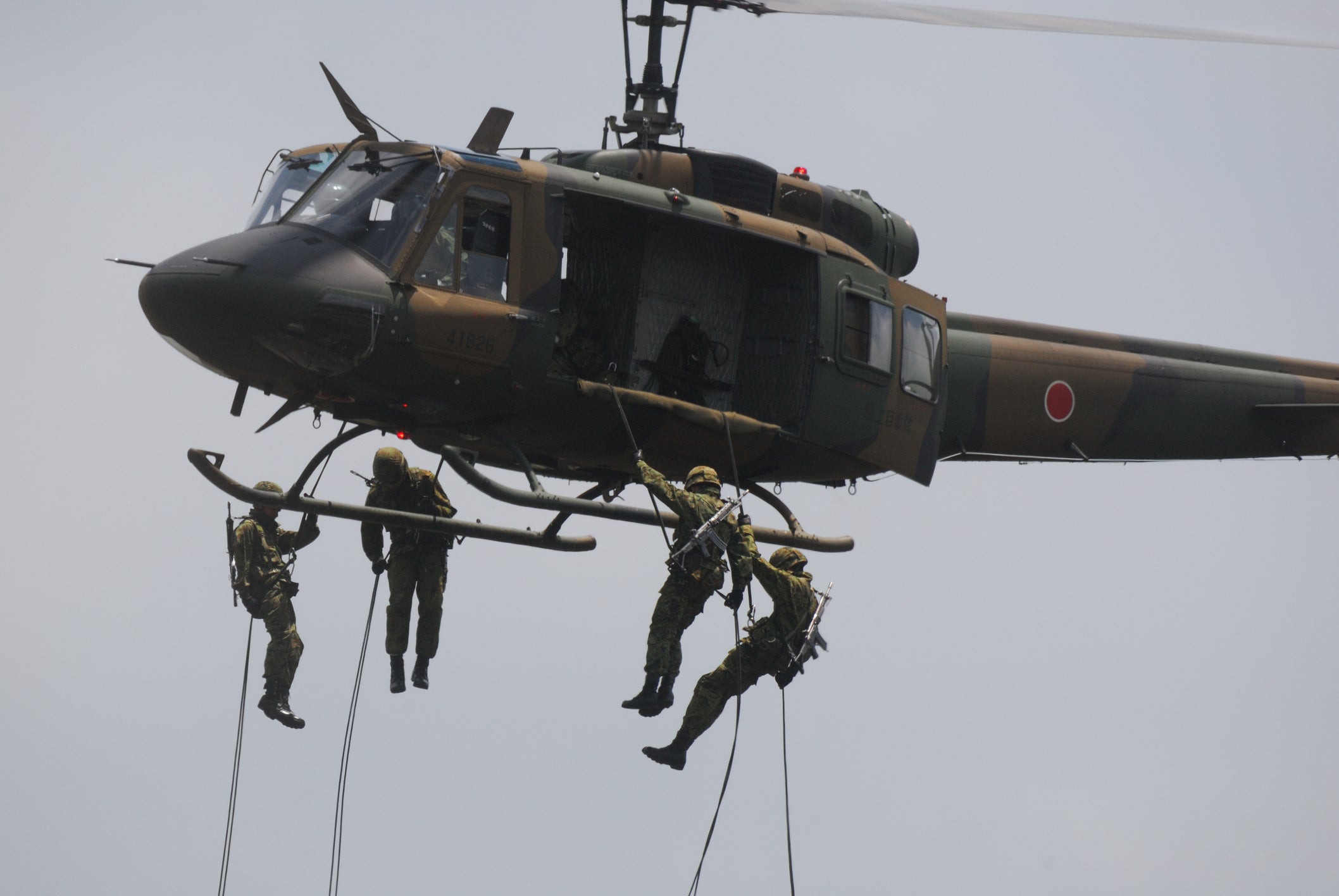Communication methods during disasters
table of contents
Introduction
1.Radio broadcast
2.Mobile phone
3.Internet
4.Disaster app
5.Emergency evacuation siren
summary
Introduction
Communication methods during disasters are extremely important for disaster-stricken areas, evacuees, relief teams, and others to communicate information and take appropriate responses. Disasters can damage communication infrastructure, so traditional communication methods as well as modern technology-enabled methods are used. Below, we will explain in detail the main means of communication during a disaster.
1.Radio broadcast
1-1 Providing emergency information
Radio broadcasting is one of the main media for providing emergency information during disasters. It plays a role in conveying important life-related information such as evacuation advisories, evacuation locations, traffic regulations, and requests for relief in disaster-stricken areas.
1-2 Communication methods in emergencies
Even if the power supply is cut off, radios can be listened to using batteries or hand-cranked generators, so they can be used even if there is a power outage or damage to communication infrastructure. This makes radio a very reliable means of communication. Providing information to groups : Radio broadcasting is a medium that can provide information to many people at once. It is suitable for conveying information not only to residents of the disaster area, but also to evacuees and relief teams.
(Demerit)
1-3 There are areas where the signal does not reach
Radio broadcasting is limited to a certain area, so the signal may not reach some parts of the disaster area, mountainous areas, remote areas, etc. Range is likely to be limited, especially if the transmission tower is damaged by a disaster.
1-4 Information update is delayed
Information on radio broadcasts may be updated more slowly than on television or the Internet. Because it takes time for radio stations to collect and broadcast information, you may need other means to stay informed.
1-5 Pay attention to the accuracy of information
During disasters, information spreads quickly, so false information can spread. Although the radio station strives to provide accurate information, information may not be verified depending on the source.
1-6 Possibility of demand concentration
During large-scale disasters, many people use radio, which can increase the load on communication lines and broadcast stations. This can reduce radio quality and disrupt communications. Overall, radio broadcasts are used as an important means of communication during disasters, but care must be taken regarding the reliability, accuracy, and scope of the information. By using multiple information sources, it is possible to convey information more reliably and respond appropriately.
2.Mobile phone
2-1 Emergency alert service
Mobile phone carriers provide emergency alert services in times of disaster. This allows important messages such as evacuation advisories and disaster warning information to be delivered to registered users on a priority basis.
2-2 Obtaining disaster information
By accessing the Internet using your mobile phone, you can obtain the latest disaster information and evacuation information from official websites and SNS .
2-3 Safety confirmation
You can check on the safety of your family and friends using the message and call functions. This will help you evacuate to a safe location or obtain information on people in need of relief.
2-4 Portable communication means
Mobile phones are highly portable and can be carried with you as long as they have a battery, making them useful for maintaining communication during evacuations or while traveling.
(Demerit)
2-5 Damage to communications infrastructure
If communication base stations or lines are damaged by a disaster, mobile phone communications may become unstable. Especially in the event of a large-scale disaster, it can take time to repair communications infrastructure.
2-6 Charging and battery life issues
During a disaster, the power supply may be cut off, so you may not be able to charge your mobile phone battery. Long-term communication may be difficult due to limited battery life.
2-7 Communication congestion
During disasters, many people use mobile phones at the same time, which can cause communication lines to become congested and delays in calls and messages.
2-8 Regional restrictions
Some disaster early warning services and information provision may be limited to specific areas. Accurate information may not be available outside the area where the disaster occurred.
Despite these disadvantages, mobile phones can be a convenient means of communication during disasters. In addition to receiving and transmitting important information, SNS and apps can be used to share information and confirm the safety of people, contributing to the efficiency of support for disaster victims and relief efforts.
3.Internet
3-1 Latest disaster information
You can obtain the latest disaster information from official websites and news sites through the Internet. You can obtain important information in real time, such as evacuation advisories, the scope and impact of disasters, and the progress of relief efforts.
3-2 Evacuation center information
You can use the Internet to obtain information such as the location of evacuation shelters, their accommodation status, and the relief supplies provided. Disaster victims and evacuees will be able to grasp the necessary information and choose an appropriate evacuation destination.
3-3 Safety confirmation
You can check on the safety of your family and friends using SNS or a dedicated app. It is useful for checking the safety status of people in disaster areas and obtaining information on people who need rescue.
3-4 Disaster support information
Information about volunteer activities and support groups may be posted on the Internet. Disaster victims and evacuees will be able to receive the support they need.
(Demerit)
3-5 Damage to communications infrastructure
If communication lines or internet infrastructure are damaged by a disaster, internet connections may become unstable. It may be difficult to receive or send information until the communications environment in the disaster area is restored.
3-6 Power supply problems
Electricity is required to use the Internet, but power outages may occur in the event of a disaster. If power is not available, your mobile device's battery may also be limited, which may limit your ability to access the Internet.
3-7 Pay attention to the accuracy of information
Information spreads easily during disasters, and false information can spread. Especially when individuals transmit information on SNS , etc., you need to be careful about reliability.
3-8 Communication congestion
During disasters, many people use the Internet, and communication lines can become congested. This may result in slower communication speeds or connection interruptions.
In the event of a disaster, while it is possible to obtain a lot of information through the Internet, it is necessary to be careful about communication conditions and the accuracy of information. Therefore, when using the Internet, it is important to refer to official websites and reliable information sources first, and to compare multiple sources of information.
4.Disaster app
4-1 Receiving disaster information
Disaster apps can receive disaster information from official organizations and local governments in real time. Important information is provided via the app, including evacuation advisories, shelter locations, and traffic information.
4-2 Safety confirmation
Disaster apps may have a function to confirm the safety of family and friends. By entering the safety information of disaster victims and sharing their safety information with other users, you can expect rescue and support activities to proceed smoothly.
4-3 Providing evacuation center information and support information
The app may contain information on evacuation shelter locations, accommodation status, and provided relief supplies. This will make it easier for disaster victims and evacuees to obtain the information they need.
4-4 Forming a community
Disaster apps allow you to form specific areas and communities to share information and conduct support activities. Collaboration between disaster victims, volunteers, and relief teams will be encouraged.
(Demerit)
4-5 Necessity of Internet connection
An internet connection is required to use the disaster app. If communication lines are congested or the communication infrastructure is damaged, there may be restrictions on the use of the app.
4-6 App penetration rate
For a disaster app to work effectively, it is desirable that many people use the app. However, not all disaster victims and evacuees have the app. Low adoption rates can be a barrier to information sharing.
4-7 Pay attention to the accuracy of information
During disasters, information can be easily confused and incorrect information can spread. Information posted on disaster apps should also be verified as an official source of information.
4-8 Smartphone power issues
Smartphones have limited battery life, so it can be difficult to use them for long periods of time. In the event of a disaster, situations in which charging may be difficult must also be considered.
Disaster apps play an important role in communication during disasters, but it is necessary to pay attention to internet connection limitations, app prevalence, and accuracy of information. Therefore, in addition to using the app, it is recommended to use it in conjunction with other communication methods such as radio or mobile phones.
5.Emergency evacuation siren
5-1 Notification of evacuation advisory
Emergency sirens are used to convey important information such as evacuation advisories and evacuation orders in the event of a disaster. The powerful sound serves to alert nearby residents that they need to evacuate.
5-2 Information on evacuation sites
Siren sounds often follow a specific pattern, and different patterns of sirens may indicate evacuation areas or evacuation areas. Local residents can recognize these patterns and take appropriate action.
5-3 Alert
The sound of an emergency siren has the effect of alerting nearby residents to the impending disaster. It prompts people to respond by alerting them to changes in alert levels or extremely dangerous situations.
(Demerit)
5-4 Possibility of confusion and panic
The sudden sound of emergency sirens can cause confusion and panic among nearby residents. Confusion can spread, especially if the meaning and how to respond are not known in advance.
5-5 There are areas where the sound cannot reach
The sound of an emergency siren only reaches a certain range, so it may not be audible in remote areas or inside buildings. Therefore, it is necessary not only to use it as a means of transmitting information, but also to use it in conjunction with other means of communication.
5-6 Limited scope of disasters
Emergency sirens are mainly sounded in specific areas, so information may not reach residents in other areas. In the event of a large-scale disaster, a means of transmitting information to multiple regions is required.
5-7 Ignorance due to non-emergency use
In addition to emergency sirens, sirens may also be sounded for testing or other purposes. This can affect communication during an emergency, as people may ignore the siren.
Emergency sirens are an important means of communication during disasters, but disadvantages such as the possibility of confusion and panic must also be considered. In order to ensure more effective information dissemination, it is important to utilize other means such as radio, mobile phones, and the Internet at the same time as siren warnings.
summary
These communication methods can be used not only individually, but also in combination to enable more effective information transmission. In the event of a disaster, it is important to make effective use of these methods and contribute to the safety of disaster victims and the facilitation of relief operations. Providing appropriate information and training before a disaster occurs will also help improve communication during a disaster.







